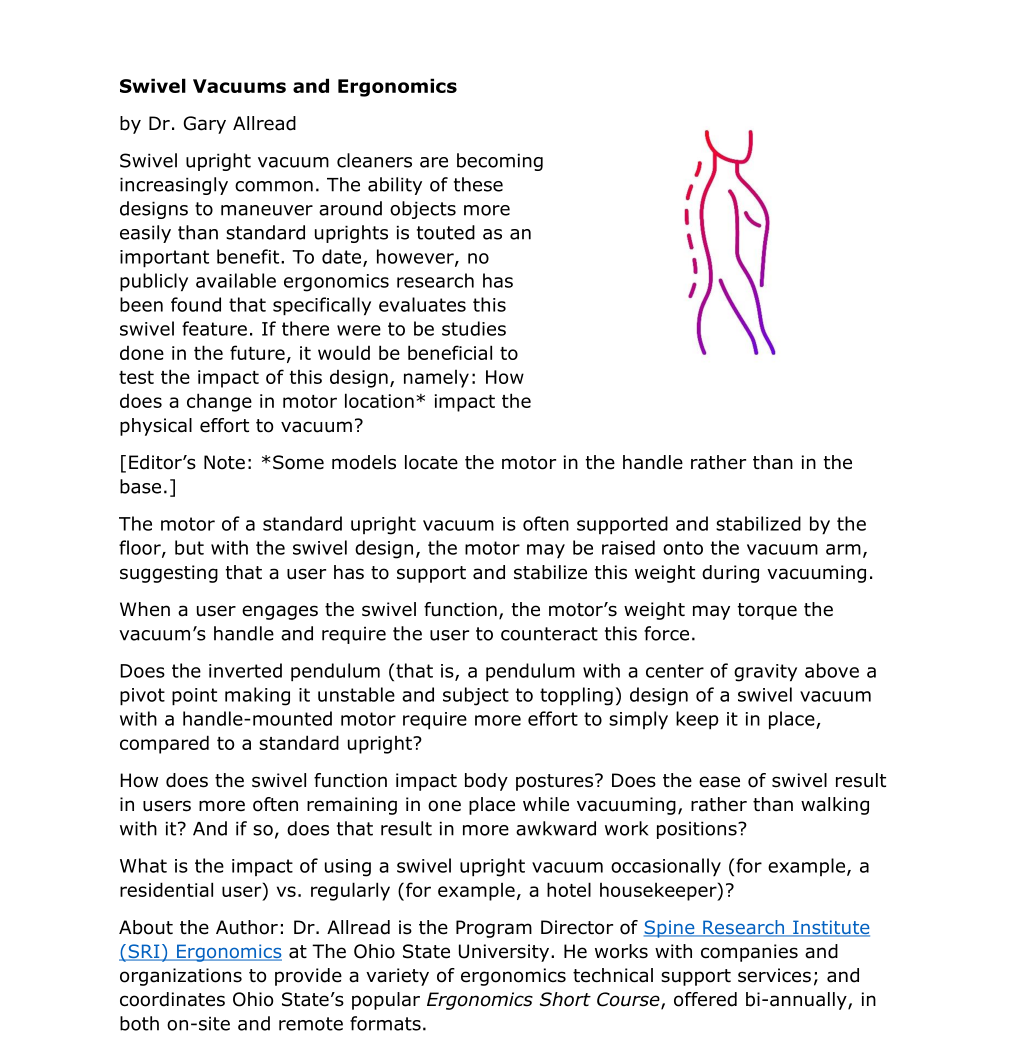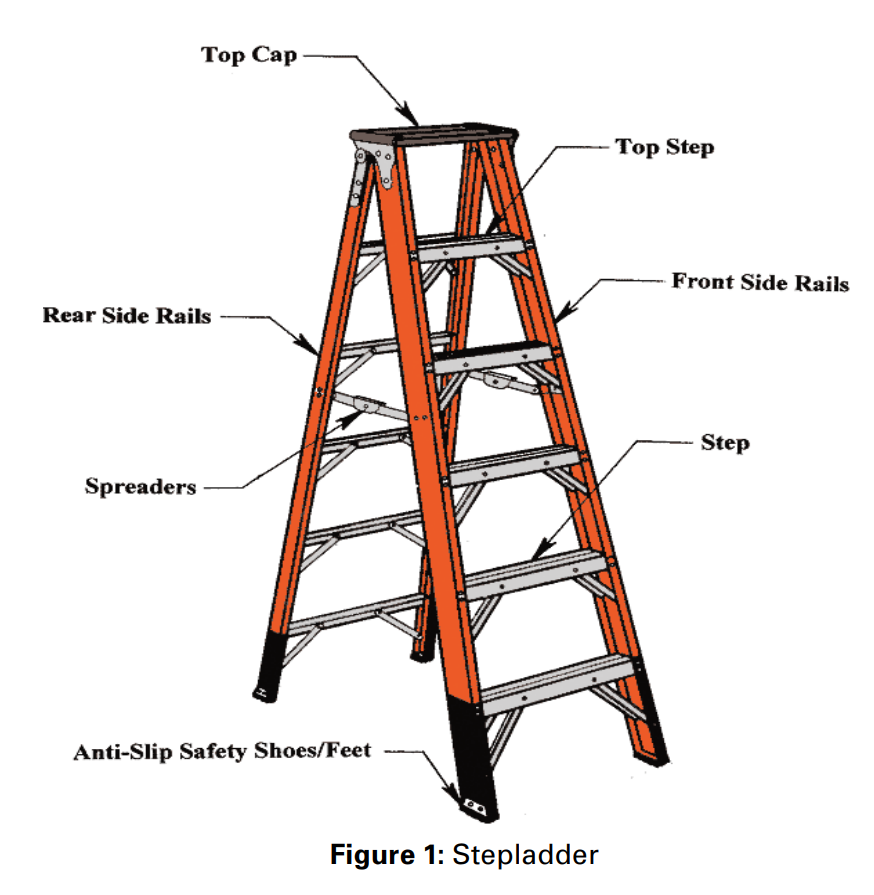Swivel Vacuums and Ergonomics
by Dr. Gary Allread
Swivel upright vacuum cleaners are becoming increasingly common. The ability of these designs to maneuver around objects more easily than standard uprights is touted as an important benefit. To date, however, no publicly available ergonomics research has been found that specifically evaluates this swivel feature. If there were to be studies done in the future, it would be beneficial to test the impact of this design, namely:
How does a change in motor location* impact the physical effort to vacuum?
The motor of a standard upright vacuum is often supported and stabilized by the floor, but with the swivel design, the motor may be raised onto the vacuum arm, suggesting that a user has to support and stabilize this weight during vacuuming.
When a user engages the swivel function, the motor’s weight may torque the vacuum’s handle and require the user to counteract this force.
Does the inverted pendulum (i.e., a pendulum with a center of gravity above a pivot point making it unstable and subject to toppling) design of a swivel vacuum with a handle-mounted motor require more effort to simply keep it in place, compared to a standard upright?
How does the swivel function impact body postures? Does the ease of swivel result in users more often remaining in one place while vacuuming, rather than walking with it? And if so, does that result in more awkward work positions?
What is the impact of using a swivel upright vacuum occasionally (e.g., residential user) vs. regularly (e.g., hotel housekeeper)?
[Editor’s Note: *Some models locate the motor in the handle rather than in the base. The 3D rendering below shows the swivel motion of an upright vacuum with the motor in the base not the handle.]
—
Dr. Allread is the Program Director of SRI-Ergonomics at The Ohio State University. In this position, Gary works extensively with companies and organizations nationwide, to provide a variety of ergonomics technical support services. This includes: conducting ergonomics worksite assessments and guiding improvement efforts; training employee groups about ergonomics principles; and developing and helping to manage companies’ ergonomics initiatives. A Certified Professional Ergonomist, he has lent his expertise to a wide range of industry sectors, including hospitality, healthcare, manufacturing, automotive assembly, transportation, warehousing, all with the mission to improve work practices, reduce injuries, and improve productivity among employees. Gary also coordinates Ohio State’s popular Ergonomics Short Course, offered bi-annually, in both on-site and remote formats.
As a professional who works in both industrial and academic settings, Dr. Allread works closely with Ohio State’s ergonomics faculty and staff to translate research to useable formats for the benefit of industry. He has been a member of the Human Factors and Ergonomics Society for 35 years and is currently President of the Applied Ergonomics Society (March 2022-March 2023.)





